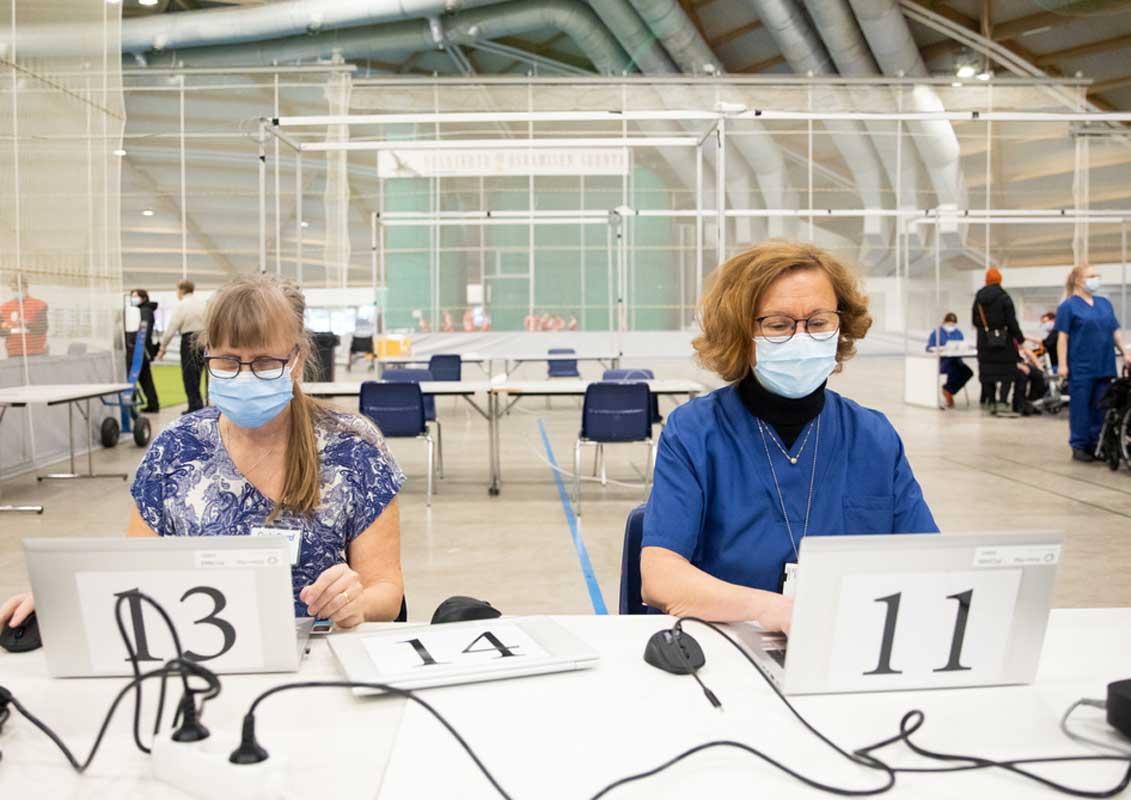Robot developed in Oulu saves thousands of work hours at Covid vaccinations

Robotics developed by the City of Oulu boosts the vaccination process and saves thousands of work hours for nurses at coronavirus vaccinations.
Mass vaccinations engage healthcare professionals every year. Each year citizens are vaccinated against influenza, but the number of coronavirus vaccinations this year is in a league of its own: approximately 300,000 Covid shots are given in Oulu this year.
A large number of vaccinations also requires a lot of staff resources. Before robotics was deployed, every vaccination event always required two healthcare professionals – now all it takes is one person.
– The deployment of software robotics has reduced the number of registering errors and saved a notable amount of time as well as personnel resources, says Hilkka Haaraniemi, service supervisor of healthcare services and one of the developers of the robot.
Previously, mass vaccinations were conducted by teams of two nurses: one administered the shot and the other entered the vaccination data into the vaccinated person’s patient record. Now the robot does the registering. This change has freed both professionals from routine registering tasks to vaccinating customers.
The process of vaccination has become smoother over the spring. The vaccinated person is now registered by reading the personal data from the bar code of an ID card.
– Once the personal data have been read, the application communicates if the person has already been vaccinated, when and with what. In other words, the application warns us not to vaccinate the customer with another dose too soon, Haaraniemi explains.
The bar code is used also to read the vaccine’s data, such as its market name, information on which shoulder it is injected, and how many injections the customer has had. The vaccine’s batch number is entered into the app manually only when the batch number changes.
First, the data are transferred securely to a protected database from which the software robot transfers them to the person’s patient record along with data about who injects the vaccine. From the patient record, the vaccination data is transferred to the customer’s personal citizens’ healthcare pages.
Software robotics were also used in the spring to book around 14,000 appointments for a second vaccination.
The personnel resources saved can be estimated in the following way: as the work done by the robot saves at least two minutes of work for every vaccination, the saved amount adds up to 5000 hours with 300,000 vaccinations, equalling almost 700 workdays. Robotics can be utilised also in future mass vaccinations, such as influenza vaccinations next autumn.
The software robotics solution has been co-developed by Oulun Digi, City of Oulu healthcare services, and Q‑Factory.

